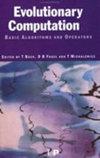A Practical Methodology for Reproducible Experimentation: An Application to the Double-Row Facility Layout Problem
IF 3.4
2区 计算机科学
Q2 COMPUTER SCIENCE, ARTIFICIAL INTELLIGENCE
引用次数: 0
Abstract
Reproducibility of experiments is a complex task in stochastic methods such as evolutionary algorithms or metaheuristics in general. Many works from the literature give general guidelines to favor reproducibility. However, none of them provide both a practical set of steps or software tools to help in this process. In this article, we propose a practical methodology to favor reproducibility in optimization problems tackled with stochastic methods. This methodology is divided into three main steps, where the researcher is assisted by software tools which implement state-of-the-art techniques related to this process. The methodology has been applied to study the double-row facility layout problem (DRFLP) where we propose a new algorithm able to obtain better results than the state-of-the-art methods. To this aim, we have also replicated the previous methods in order to complete the study with a new set of larger instances. All the produced artifacts related to the methodology and the study of the target problem are available in Zenodo.可重复实验的实用方法:双排设施布局问题的应用。
在进化算法或元启发式算法等随机方法中,实验的可重复性是一项复杂的任务。许多文献都给出了有利于可重复性的一般指导原则。然而,它们都没有提供一套实用的步骤和软件工具来帮助这一过程。在本文中,我们提出了一种实用的方法论,以便在使用随机方法处理优化问题时提高可重复性。该方法分为三个主要步骤,研究人员可借助软件工具实现与此过程相关的先进技术。我们将该方法应用于研究双排设施布局问题,并提出了一种新算法,该算法能够获得比最先进方法更好的结果。为此,我们还复制了以前的方法,以便通过一组新的更大实例完成研究。所有与方法论和目标问题研究相关的成果都可以在 Zenodo 中找到。
本文章由计算机程序翻译,如有差异,请以英文原文为准。
求助全文
约1分钟内获得全文
求助全文
来源期刊

Evolutionary Computation
工程技术-计算机:理论方法
CiteScore
6.40
自引率
1.50%
发文量
20
审稿时长
3 months
期刊介绍:
Evolutionary Computation is a leading journal in its field. It provides an international forum for facilitating and enhancing the exchange of information among researchers involved in both the theoretical and practical aspects of computational systems drawing their inspiration from nature, with particular emphasis on evolutionary models of computation such as genetic algorithms, evolutionary strategies, classifier systems, evolutionary programming, and genetic programming. It welcomes articles from related fields such as swarm intelligence (e.g. Ant Colony Optimization and Particle Swarm Optimization), and other nature-inspired computation paradigms (e.g. Artificial Immune Systems). As well as publishing articles describing theoretical and/or experimental work, the journal also welcomes application-focused papers describing breakthrough results in an application domain or methodological papers where the specificities of the real-world problem led to significant algorithmic improvements that could possibly be generalized to other areas.
 求助内容:
求助内容: 应助结果提醒方式:
应助结果提醒方式:


